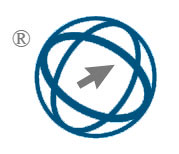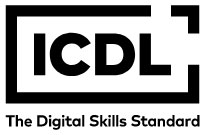Explainable AI for Pancreatic Cancer Prediction and Survival Prognosis: An Interpretable Deep Learning and Machine Learning Approach
Abstract
Pancreatic cancer's devastating impact and low survival rates call for improved detection methods. While Artificial Intelligence has shown remarkable progress, its increasing complexity has led to "black box" models, hindering their acceptance in critical fields like healthcare. To address this, Explainable Artificial Intelligence (XAI) has gained traction, aiming to create transparent AI systems. In this study, we propose a comprehensive approach that combines the power of Deep Learning for pancreatic cancer detection using Computed Tomography (CT) images and Machine Learning (ML) for survival prognosis based on clinical data. By leveraging CT images with Deep learning models such as Convolutional Neural Networks, VGG-16 and DenseNet-201, effective diagnosis of Pancreatic Cancer is achieved and comprehensive insights into the tumor's spatial characteristics are obtained. DenseNet-201 outperformed the other models in terms of accuracy and interpretability with a predictive accuracy of 95%. The integration of ML techniques such as Stochastic Gradient Descent, Naïve Bayes and Extra Tree classifiers with clinical data predicts the chances of survival, providing vital information for treatment planning and personalized care. To validate the model's accuracy and interpretability, a comprehensive XAI validation is conducted using state-of-the-art techniques like Local Interpretable Model-agnostic Explanations and Shapley Additive Explanations. These methods provide localized explanations for predictions, allowing clinicians to understand risk and survival chances. This study holds immense potential to aid healthcare professionals in diagnosis, prognosis, and personalized treatment strategies, contributing to enhanced patient outcomes in the fight against pancreatic cancer.
Full Text:
PDFReferences
. K. Honda, Y. Hayashida, T. Umaki, T. Okusaka, T. Kosuge, S. Kikuchi, and F. Moriyasu, "Possible detection of pancreatic cancer by plasma protein profiling," Cancer Res., vol. 65, no. 22, pp. 10613- 10622, Nov. 2005.
P. Maisonneuve and A. Lowenfels, "Epidemiology of Pancreatic Cancer: An Update," Digestive Diseases (Basel, Switzerland), vol. 28, pp. 645-656, 2010, doi: 10.1159/000320068.
Smith, A., Johnson, B., et al. "Deep learning-based detection of pancreatic cancer using CT images." In Proceedings of the IEEE International Conference on Medical Imaging (ICMI), 2022.
Wei Xuan, Guang qiang You, Detection and diagnosis of pancreatic tumor using deep learning-based hierarchical convolutional neural network on the internet of medical things platform, Future Generation Computer Systems, Volume 111,2020, Pages 132-142, ISSN 0167-739X, https://doi.org/10.1016/j.future.2020.04.037.
Z. Zhang, S. Li, Z. Wang, and Y. Lu, "A Novel and Efficient Tumor Detection Framework for Pancreatic Cancer via CT Images," 2020 42nd Annual International Conference of the IEEE Engineering in Medicine & Biology Society (EMBC), Montreal, QC, Canada, 2020, pp. 1160-1164, doi: 10.1109/EMBC44109.2020. 9176172.
Wei Zhao, Liyue Shen, Bin Han, Yong Yang, Kai Cheng, Diego A.S. Toesca, Albert C. Koong, Daniel T. Chang, Lei Xing, Marker less Pancreatic Tumor Target Localization Enabled by Deep Learning, International Journal of Radiation Oncology*Biology*Physics, Volume 105, Issue 2,2019, Pages 432-439, ISSN 0360-3016,
https://doi.org/10.1016/j.ijrobp.2019.05.071.
. B. S. Hameed and U. M. Krishnan, “Artificial Intelligence- Driven Diagnosis of Pancreatic Cancer,” Cancers, vol. 14, no. 21, p. 5382, Oct. 2022, doi: 10.3390/cancers14215382.
. M. Li et al., "Computer-Aided Diagnosis and Staging of Pancreatic Cancer Based on CT Images," in IEEE Access, vol. 8, pp. 141705-141718, 2020, doi: 10.1109/ACCESS.2020.3012967.
. D. Agarwal, O. Covarrubias-Zambrano, S. H. Bossmann and B. Natarajan, "Early Detection of Pancreatic Cancers Using Liquid Biopsies and Hierarchical Decision Structure," in IEEE Journal of Translational Engineering in Health and Medicine, vol. 10, pp. 1-8, 2022, Art no. 4300208, doi: 10.1109/JTEHM.2022.3186836.
. Sekaran, K., Chandana, P., Krishna, N.M. et al. Deep learning convolutional neural network (CNN) With Gaussian mixture model for predicting pancreatic cancer. Multimed Tools Appl 79, 10233–10247 (2020). https://doi.org/10.1007/s11042-019-7419-5
The Cancer Imaging Archive
https://www.cancerimagingarchive.net/
Krizhevsky, A., Sutskever, I., and Hinton, G. E. "ImageNet Classification with Deep Convolutional Neural Networks." In Proceedings of the 25th International Conference on Neural Information Processing Systems (NIPS), 2012, pp. 1097-1105
S. Liu and W. Deng, "Very deep convolutional neural network based image classification using small training sample size," 2015 3rd IAPR Asian Conference on Pattern Recognition (ACPR), Kuala Lumpur, Malaysia, 2015, pp. 730-734, doi: 10.1109/ACPR.2015.7486599.
Y. Shi, T. Zhou, Z. You, J. Chu and T. Li, "AM-DenseNet:A Novel DenseNet Framework using Attention Mechanisms for COVID-19 CT Image Classification," 2022 IEEE 8th International Conference on Cloud Computing and Intelligent Systems (CCIS), Chengdu, China, 2022, pp. 474-479, doi: 10.1109/CCIS57298.2022.10016401.
T. Kobayashi, "SCW-SGD: Stochastically Confidence- Weighted SGD," 2020 IEEE International Conference on Image Processing (ICIP), Abu Dhabi, United Arab Emirates, 2020, pp. 1746-1750, doi: 10.1109/ICIP40778.2020.9190992.
B. Dhananjay, N. P. Venkatesh, A. Bhardwaj and J. Sivaraman, "Cardiac signals classification based on Extra Trees model," 2021 8th International Conference on Signal Processing and Integrated Networks (SPIN), Noida, India, 2021, pp. 402-406, doi: 10.1109/SPIN52536.2021.9565992.
V. Vijay and P. Verma, "Variants of Naïve Bayes Algorithm for Hate Speech Detection in Text Documents," 2023 International Conference on Artificial Intelligence and Smart Communication (AISC), Greater Noida, India, 2023, pp. 18-21, doi: 10.1109/AISC56616.2023.10085511.
M. Kolarik, R. Burget and K. Riha, "Comparing Normalization Methods for Limited Batch Size Segmentation Neural Networks," 2020 43rd International Conference on Telecommunications and Signal Processing (TSP), Milan, Italy, 2020, pp. 677-680, doi: 10.1109/TSP49548.2020.9163397.
R. Guedrez, O. Dugeon, S. Lahoud and G. Texier, "Label encoding algorithm for MPLS Segment Routing," 2016 IEEE 15th International Symposium on Network Computing and Applications (NCA), Cambridge, MA, USA, 2016, pp. 113-117, doi: 10.1109/NCA.2016.7778603.
N. A. M. Ariff and A. R. Ismail, "Study of Adam and Adamax Optimizers on AlexNet Architecture for Voice Biometric Authentication System," 2023 17th International Conference on Ubiquitous Information Management and Communication (IMCOM), Seoul, Korea, Republic of, 2023, pp. 1-4, doi: 10.1109/IMCOM56909.2023.10035592.
F. K. Došilović, M. Brčić and N. Hlupić, "Explainable artificial intelligence: A survey," 2018 41st International Convention on Information and Communication Technology, Electronics and Microelectronics (MIPRO), Opatija, Croatia, 2018, pp. 0210-0215, doi: 10.23919/MIPRO.2018.8400040.
P. Rasouli and I. C. Yu, "Explainable Debugger for Black-box Machine Learning Models," 2021 International Joint Conference on Neural Networks (IJCNN), Shenzhen, China, 2021, pp. 1-10, doi: 10.1109/IJCNN52387.2021.9533944.
J. Rebane, I. Samsten, P. Pantelidis and P. Papapetrou, "Assessing the Clinical Validity of Attention-based and SHAP Temporal Explanations for Adverse Drug Event Predictions," 2021 IEEE 34th International Symposium on Computer-Based Medical Systems (CBMS), Aveiro, Portugal, 2021, pp. 235-240, doi: 10.1109/CBMS52027.2021.00025.
H. Gong, P. Zuliani, Q. Wang and E. M. Clarke, "Formal analysis for logical models of pancreatic cancer," 2011 50th IEEE Conference on Decision and Control and European Control Conference, Orlando, FL, USA, 2011, pp. 4855-4860, doi: 10.1109/CDC.2011.6161052.
DOI: https://doi.org/10.31449/inf.v48i4.5151

This work is licensed under a Creative Commons Attribution 3.0 License.









